-
THE CINEMA TRAVELERS (Shirley Abraham, Amit Madheshiya: 2016)
SHIRLEY ABRAHAM, AMIT MADHESHIYA: THE CINEMA TRAVELERS (2016)
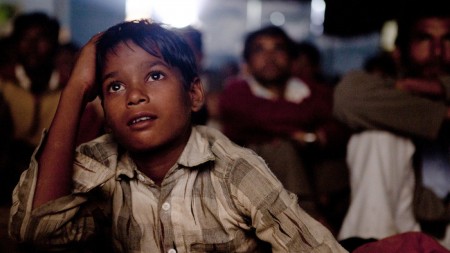
A fading cinematic institution of rural India
"Showmen riding cinema lorries have brought the wonder of the movies to faraway villages in India once every year. Seven decades on, as their cinema projectors crumble and film reels become scarce, their patrons are lured by slick digital technology. A benevolent showman, a shrewd exhibitor and a maverick projector mechanic bear a beautiful burden - to keep the last traveling cinemas of the world running" - IMDb summary. This visually colorful and beautiful documentary appropriately begins with mages of a fairground movie show in a romantic dusk, because this is a film about the twilight of a world of once glorious, now creaky provincial entertainment for the young, the poor, and the naive who before TV came their way, relied on traveling annual fairs that mobile outdoor movie projectors were an essential part of.
This documentary is a labor of love. Some say Shirley Abraham and Amit Madheshiya spent five years, filming this world. Hollywood Reporter's review and article by Alex Ritman, who interviewed Abraham, says it was eight years. Both of the "cinema travelers," Mohammed and Bapu, and Prakash, the man with the repair shop and the innovative "oil bathed" projector he still dreams will be a hot seller, do their work around Maharashtra, the vast state whose capital is Mumbai. There is something very Indian about all this. It's so very quaint, colorful, and increasingly rusted and collapsing. If the projectors weren't taken apart and put together every year and left out in rain and bad weather in a leaky lorry but kept indoors, they might be much more pristine: they look built like battleships. But nowadays, as the projection men and their crews and the seventy-year-old projector repair specialist and philosophizer Prokash see their occupations turn into a fading dream, it seems infinitely sad.
Partly this is the decline of a folkloric institution of temporary outdoor tented movie houses. Partly it's the decline of the use of film itself as a medium for projecting movies. Digital has taken over modern cinemas. But film's not vanished, or unvalued, despite what some will glibly tell you. There are some famous and prestigious directors who still passionately advocate using film stock against the takeover of digital for its visual warmth and subtlety. These include Quentin Tarantino, Steven Spielberg; the two Anderson auteurs, Paul Thomas and Wes; Christopher Nolan, Rian Johnson, James Gray, Judd Apatow, and the newcomer Alex Ross Perry. And these are no amateurs or cranks by any means.
But their use of the increasingly rare medium is a luxury. It's obvious that projecting digitally is simpler and more compact and now the only format universally available. (There is a campaign to insure there is one cinema capable of projecting celluloid film in every important town.) Almodóvar has said that he was forced to shoot his latest film, Julieta, on digital, because film stock was not available in Spain. He was not pleased with the color quality. But for all its beauty, there's a catch - film degrades in repeated projections, as digital does not; but that's part of film's charm, its thickness, it's look of emulsion, its accumulated scratches, an echo of the "baraka," the blessedness that comes from long use celebrated by Robert Graves in his Oxford Poetry lecture on this topic. Writing about this in The New Yorker in 2014 ("Don't Worry About the End of Film"), Richard Brody has commented that digitally restored films can look too perfect, and not natural.
These rural Indian guys, deep into the physical rituals and traditions of their giant machines, chittering reels, and old fashioned tent shows, can ill afford to convert or update their equipment - some nights they can barely afford to feed their staff. And worse still, the poor country Indian audiences seem to be losing interest in watching movies in a tent, no matter how they're projected.(The kids are the ones who always show up.) Home viewing is encroaching on public cinemas all over the world. Nonetheless midway in this film, an older cinema traveler approaches Bapu and tells him he should paint the lorry, which he himself occupied for fifteen years. Bapu, who seems galvanized, winds up getting digital equipment. It works, and he says he's as happy - for now - as on his wedding day when he sees the "DEMO" clip digitally projected ultra sharp on the country screen.
Bapu takes the big old projector in for scrap and bargains hard to get a couple of hundred dollars. Mohammed nervously blesses his new digital projector with incense and spices as they did for the old ones, but after the kids have announced a show, they can't figure out how to work it; an update requires an internet connection, which they haven't got. The last night of the season he shows a film on big reels again. We end with stills, as at the beginning, of the enchanted faces of children in the movie audience, accompanied with "Laura Karpman and Nora Kroll-Rosenbaum’s mournful score,"as Nick Schrader calls it in his poetic Variety review of this doc written at Cannes last year. The Cinema Travelers is a little slow and repetitious at times, but it is suffused with the poetry of olden times and simple pleasures and the bygone era of celluloid magic for ordinary people. It's an Indian Cinema Paradiso, only real.
The Cinema Travelers, 96 mins., in Hindi and Marathi, debuted at Cannes 15 May 2016 (Cannes Classics); shown in two dozen other international festivals including Toronto, New York, and the Museum of the Moving Image in NYC coming Apr. 15; screened for this review as part of the 2017 San Francisco International Film Festival.
Showtimes SFIFF: Apr. 9 at 6 pm, Apr. 10 at 4 pm and Apr. 15 at 2:45 pm, all at at San Francisco Museum of Modern Art.
Last edited by Chris Knipp; 04-03-2017 at 10:24 PM.
-
MUKTI BHAWAN/HOTEL SALVATION (Shubhashish Bhutian 2016)
SHUBHASHISH BHUTAN: MUKTI BHAWAN/HOTEL SALVATION (2016)
PREVIEW
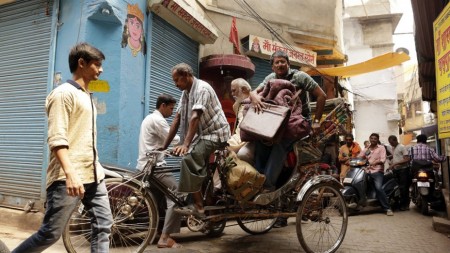
Ancient traditions and Bollywood jokes
A person living by a mistaken notion is a universal basis for humor. In Mukti Bhawan/Hotel Salvation that person is Daya (Lalit Behl), a tall, spry gentleman of 77 who gets it into his head that he is about to die. This fits into the culture in India and can be a source of humor. It wouldn't work here, where Americans avoid the idea of dying as long as they can. Indians are comfortable with the idea of preparing to die by cleansing themselves of sin and care beforehand. It's considered a proper thing to do, nothing morbid about it. It's just a bit silly to get going at it till death is pretty imminent. And for Daya, it apparently isn't.
Shubhashish Bhutiani's first feature. The beautiful, subtle last sequences bode well for this very young director, who's only 25.
Mukti Bhawan/Hotel Salvation, 102 mins., debuted at Venice winning a Unesco prize there; also showing at Busan, Dubai, and San Francisco, screened for this review at the SFIFF.
SHOWTIMES SFIFF: 3 pm Apr. ,6 San Francisco Museum of Modern Art; 8:15 pm Apr. 7, Roxie Theater.
Last edited by Chris Knipp; 04-02-2017 at 08:33 PM.
-
BENDING THE ARC (Kief Davidson, Pedro Kos 2016)
KIEF DAVIDSON, PEDRO KOS: BENDING THE ARC (2016)
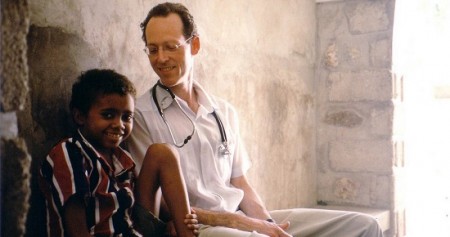
DR. PAUL FARMER WITH A PATIENT
Partners in Health and its founders: the right to health care as a moral imperative
Ophelia Dahl, cofounder of Partners in Health with Paul Farmer and Jim Yong Kim, whose work is the subject of this film, starts us off with some blunt information: the world health picture could be much better, and the reason why it's not is not medical but political and economic. A Sixties world plan to guarantee health as a universal right, promulgated after the fall of colonialism, she says, was crushed by the rich nations, the World Bank and World Health Organization. She arrived in Haiti in 1983 at the age of 18 1/2. She met Paul Farmer there and they clicked at once. Farmer was 23, and hadn't started medical school, but was "the man who would cure the world," as described in the book, Mountains Beyond Mountains by Tracy Kidder. It all grows from there.
This moving documentary is full of facts and dates, but its heart is its humanity, the faces and voices of these leaders in world health and their patients and their partners. Hard work, determination are mixed with warmth, caring and hope. And this film is a blend of archival, current film, and interview that tells its story not just seamlessly but electrifyingly. It's hard to watch it unmoved and one can only hope young people will be inspired to follow in the footsteps of the heroes seen here. Should the extremely poor be allowed to die because their medical care is too expensive? This film says no. It sees the right to health care as a moral imperative - as did those who drew up that world health plan in the Sixties.
Kief Davidson and Pedro Kos' documentary is about living the dream of achieving health care for all despite the negativism of the pessimists and those who simply, as they tell it, don't really like giving money to the poor or to non-whites. Now, Partners in Health is at work strengthening the health care systems of ten countries. It started small, in rural Haiti thirty years ago. Farmer loved Haiti and its culture and spoke French and Creole. He's an international medical celebrity now, but it's clear his affection for Haiti and the Haitians - and willingness to stick by them in their recent tragedies - remains as strong as ever.
The first phase is Tuberculosis; then there is AIDS/HIV; then there is, briefly but horrifyingly, Ebola. The founders were joined by Joia Mukerjee, who just wanted to be sure they had a sense of humor, and got the job from Farmer when she said she'd work for free. The first fight was alongside Father Fritz in the Central Plateau of Haiti. They made the treatment work in the poor rural areas through "Accompagnateurs," whose job is to be cheerful, go to patients every day, encourage them, and make sure they take their medications. The PIH founders got important financial aid from early on by Tom White, a rich man in Newton, Massachusetts, who wanted to give away his millions before he died - and succeeded in doing so, supporting Partners in Health from its foundation and for two decades thereafter.
PIH moved to Peru, which supposedly had a model health system. But it turned out that the TB treatment was failing. Many who'd had treatment turned out to be still sick with MDR-TB, Multiple Drug Resistant Tuburculosis. Again persistence, faith, determination, getting the funds and the medications and using accompagnateurs to make sure they doggedly went on taking them till they got better won out.
A success story among others is Melquiades - when we first see him, it's 3 years of 11 drugs a day and "nada": he is a pitiful wraith, hopeless and suffering, and his relatives are ordering the coffin. But PIH is bent on showing their methods work, and they kept at it. So we get to see him reappear in later films, a cheerful, robust young man; and there are Haitians just like him.
The AIDS story takes Partners in Health into Africa, where we hear from the irresistibly charming, but equally tough, Dr. Agnes Binagwaho, from Rwanda, Minister of Health. In a kind of coup de theatre, she is being interviewed by the filmmakers talking about the successful battle against HIV/AIDS in Rwanda, when she receives the first report of a suspected case of Ebola on her cell phone. She shifts into rapid-fire French, giving orders how to marshal all available forces to put up protective walls against this case spreading, if it is one; later she reports to a roomful of doctors the good news that it was "negative". After the massacres when PIH came to Rwanda it had no medical system. Now with Dr. Binagwaho it has one, and the resistance to Ebola shows that.
This is one of the specific year-by-year stories that runs through the film. The long-term, big-picture story of global progress and changing attitudes is also being told. We learn, as from the first, that the international drug and bank establishment habitually doesn't want to invest in poor people so they label all the medical success stories "not proven," "not sustainable,"and "impractical." Red flag words: "sustainable" and "prevention." These words signal calls for policies that will let poor people die. And we hear lots of examples of this talk and this thinking.
PIH's early work was in the Eighties; their first big battle for global execution of their principles was in the Nineties. Other big leaps forward came in the 2000's. Two American presidents took surprising and important steps in the latter period. In 2003, George W. Bush turned the tide for Africa and the Third World with a five-year $15 billian allocation for HIV/AIDS globally. And in 2012, in an unprecedented move, Barack Obama nominated Jim Kim, PIH founder, doctor, anthropologist, not a banker, as President of the World Bank. This shift came just in time. The big Ebola epidemic began the next year and lasted three years. Only because Kim was directing the World Bank could it provide the necessary funds, which was essential, because Ebola is a disease that's truly dangerous where a country has a weak health system and is poor.
In his Sundance review in <a href="http://www.hollywoodreporter.com/review/bending-arc-review-968063">Hollywood Reporter</a>, Duane Byrge speaks of the "the crisp cadence of Kos and Yuki Aizawa's surgical editing" of Bending the Arc, and indeed it's essential to a film like this that all the images and sounds come at the precise moments when they're needed. That is the key also to how well it tells and coordinates its two parallel stories: locally solving health problems year by year, and globally growing Partners in Health (PIH) and health systems in the Third World.
The beauty of this film is how it fulfills the Horatian ideal of dulce et utile, sweet and useful. It moves us while it informs us - and more than that, educates us. It alerts us to the naysayers and pessimists who wear the blinders of money, and it teaches us how it's possible to make health care work with minimal means, so long as you build a social network and there are people with passion like those we see here working on it. The backbone comes from the screenplay by Cori Shepherd Stern, augmented by the score composed by H. Scott Salinas and Matthew Atticus Berger, and the images from dp's Nick Higgins, Guy Mossman, David Murdock and Joshua Dreyfus.
Bending the Arc, 102 mins,, debuted at Sundance Jan. 2017. Festival showings at Miami, San Francisco, Minneapolis, and Montclair. Screened for this review as part of the SFIFF. SHOWING: April 14, 2017 at
5:00 p.m. at the Castro Theatre, San Francisco.
US theatrical release date: 6 Oct. 2017.
Last edited by Chris Knipp; 10-07-2017 at 06:05 AM.
-
DUET ( Navid Danesh 2016)
NAVID DANESH: DUET (2016)
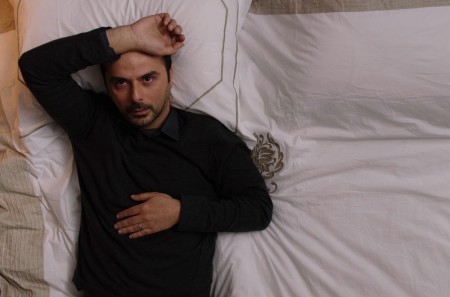
ALI MOSAFFA IN DUET
The road to Firooz Kooh
Duet, by first-time Iranian director Navid Danesh, delivers nothing but unease. Hamed (Morteza Farshbaf) used to be with Sepideh (Negar Javaherian), when they were music students; the way he ended it wasn't nice. He runs into her at a nice music store, where she's getting some DVDs made by his friend Kaveh (Kaveh Kateb) and they linger to talk. Both, they learn, are now married. This encounter starts a crack in the delicate network that holds together the nice bourgeois lives of two couples. Sepideh's building engineer husband Massoud (Ali Bosaffa without the wig he wore for Farhadi's The Past) finds Sepideh "strange" when she comes back to the car from this meeting, where he's been waiting. She begs off going to a funeral or burial celebration, which we do attend.
Later it emerges this is a contemporary, married, a close friend, and an inexplicable suicide. This of course introduces another note my disquieting mystery.
The next day, Massoud finds a recording his wife has salted away and goes sleuthing to the store, and by pretending to be interested in Hamed's new record of a duet, learns he's married to Minoo (Hedieh Tehrani), gets the phone number, and goes to the music school where she teaches to meet her husband. Instead he sort of collapses talking to Minoo, in an all-white moderne reception room. In the background the toddler musicians play a screechy version of Beethoven's "Ode to Joy" and then Anna Magdalena Bach's "Bouree." He stares at a big photograph of tree-specked snowy mountains she says is "the road to Firooz Kooh." It's the objective correlative for the emotional aridity all around. Nothing here is uncalculated, and more's the pity. Note the power failure, allowing for interior chiaroscuros, and the leaky plumbing that progressively disfigures Sepideh and Messoud's apartment.
And so then anyway there's an accumulation of other duets besides the musical one: Sepideh and Hamed; then Sepideh and Massoud; then Massoud and Minoo, and so on. These long, drawn-out, laconic conversations may seem even more uncomfortable to the western viewer because of the hijabs that make the women look like stylish nuns; and the hushed voices in which everybody speaks ramp up the muted, somehow maddening tension. Nobody is telling the truth. But is there truth to tell? The surface is attractive. Danesh seems more attuned to exquisite visuals than his colleague Farhadi and his use of ambient sound by Amir Hossein Ghasemi and music by Peyman Yazdanian is subtle and precise. One looks forward to the car trips: the interiors of vehicles are so beautifully shot by dp Hossein Jafarian. The score would work for a low-keyed thriller - or a requiem.
But underneath much less is discernible. What keeps building up is not plot lines or revelations, but a growing body of things unsaid that don't quite lead anywhere. Certainly Sepideh is mad at Hamed for the way he ended things, but now everybody seems to be pissed off at everybody else for no discernible reason. Everyone's off on the road to Firooz Kooh. We, who can't get there, need more clues from Danesh's tight-lipped screenplay and more payoff from his scenes. But there is promise in the film's polish and intensity.
Duet, 103 mins., debuted at Tallinn Black Nights Film Festival Nov. 2016, Iran theatrical release 25 Mar. 2017. Screened for this review as part of the San Francisco International Film Festival.
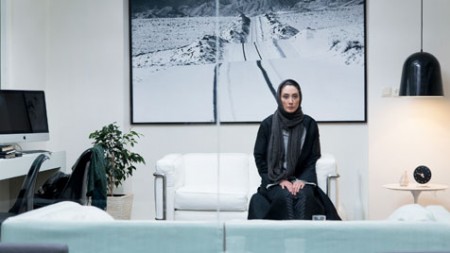
HEDIEH TEHRANI IN DUET
Last edited by Chris Knipp; 04-05-2017 at 12:04 PM.
-
HEAVEN SENT/TOMBÉ DU CIEL (Wissam Charaf 2016)
WISSAM CHARAF: HEAVEN SENT/TOMBÉ DU CIEL/ (2016)
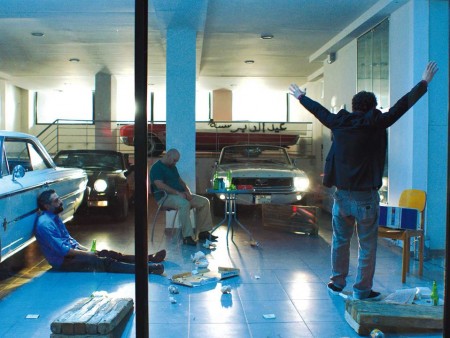
A bodyguard, a pop star, and a dead older brother in Beirut
Heaven Sent/Tombé du ciel (actually in Arabic, so it's title is من ألسماء) is a whimsical, meandering fable about death, heroism, machismo, and the Lebanese condition, which is much affected by the beautiful little nation's many wars and particularly its devastating civil conflict from 1975-1990. This event remains a presence in a latent violence (and ever present suicide bombing rate recounted on the radio) and a lingering sense of exhaustion. The focus is on two brothers. If that is what they are.
Omar, the younger (Raed Yassin), was a child 20 years ago when his brother Samir (Rodrigue Sleiman) disappeared in the war, presumed dead. The two meet one day at a club when Omar knocks Samir to the ground outside, and then realizes who he is. He has been away, to put it mildly. A doctor declares him fit (despite being unconscious, and having dirty toenails), and prescribes vitamins and a pedicure. He looks younger than Omar now. Omar is a thick, shaven-head, baby-faced security guard. He's actually more of a club bouncer, but he gets hired to help protect a singer (Yumna Marwan) who turns to politics, only the site is bombed when she declares her candidacy, and Omar lands in the hospital saving her while the other three guards get killed. She sends him a bazooka to his hospital room with a brief thank you note. (In Beirut, they take bazookas in hospital rooms.) When they go home, Omar doesn't speak.
Samir can't get a job. Everyone thinks he's dead. Perhaps he is dead. He goes for an interview. "Mr. Samir," the interviewer reads. "Single. Bachelors in Comparative Literature. Thesis: Bin Laden vs. Haifa Wehbe: The Mars and Venus of the 21st Century Arab citizen." (Haifa Wehbe is a Lebanese actress, singer, and babe.) "Career: Archivist, chronicler of news items, tour guide, marketing adviser." His interviewer declares him a man of culture, but when it turns out he has no I.D. of any kind, sends him away. Sometimes the brothers are at home, with their father, who is gaga, and only shouts that Lebanon has torn all invaders to bits. They are bothered by a slob of a neighbor who plays the TV too loud. There is revenge.
Omar's best friend is Rami (Said Serhan), who sells classic cars for a living and plans to immigrate to Germany and declares, wisely, we may surmise, "I need to learn German." "You don't want to go there," Omar says. "The weather's really cold and the food's lousy." "What book can I read to learn German?" Rami asks. "Mein Kampf," Omar replies. "You can find it everywhere nowadays." Where the two brothers stand relatively as men of arms shows when Omar is confused and befuddled about how to assemble his Glock automatic handgun and Samir assembles it blindfolded in twelve seconds.
The brothers take a trip to the mountains to visit the grave of their mother. Meanwhile Samir is also trying to contact Castro, a comrade, maybe a former commander, from the wartime days who has created a peacetime career of coaching people in the art of self defense. Castro refuses to believe Samir's alive. This is when the film veers from the comic into the magical. Unfortunately, as several different French critics have pointed out, Heaven Sent never "finds its rhythm," and remains just a series of "scenettes" even if some are striking.
Perhaps Charaf's film doesn't always work, but its scenes are simple and bold. There is a confidence about them that's bracing. The images, in academy ratio, are at times surprisingly handsome. Tombé du ciel has a little of the tragicomedy of Palestinian auteur Elia Suleiman about it (the Daily Star writer thought of Roy Andersson), and we must look for more in future, since he's had the blessing of Cannes workshops.
Heaven Sent/Tombé du ciel , من ألسماء /seventy mins., debuted at Cannes May 2016 in the ACID, Association du Cinema Independent pour la Diffusion. Filmmaking prize at the War on Screen Festival, Châlons-en-Champagne; Grand Prix at Tubingen-Stuggart; Monpelllier; Saint-Paul-Trois-Châteaux; Beirut; French film fest, Lisbon, Cinematheque of Tangiers. Theatrical release in Paris 17 Mar. 2017, without raves (AlloCiné press rating 2.9 from 12 reviews). See the article/review in the Beirut Daily Star by Jim Quilty. I've stolen his title, and some other things.
Last edited by Chris Knipp; 07-25-2017 at 04:09 PM.
-
THE NEXT SKIN/LA PROPERA PEL (Isa Campo, Isaki Lacuesta 2016)
ISA CAMPO, ISAKI LACUESTA: THE NEXT SKIN/LA PROPERA PELL (2016)
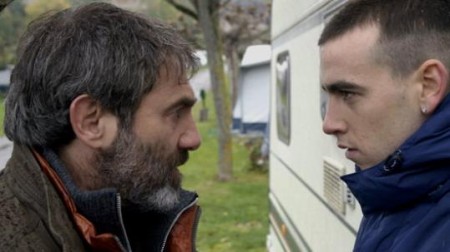
SERGI LOPEZ, ÀLEX MONNER IN THE NEXT SKIN
The lost boy
In The Next Skin language is not the problem. After the boy (played by the talented Àlex Monner) is brought back from the French orphanage, he speaks perfectly the Catalan of the Spanish Pyranees. He also seems to fit right in. But is he really Léo, as they called him at the orphanage, or is he rightfully Gabriel, the boy gone for eight years, as is surmised, and as the mother, Ana (Emma Suarez of Almodóvar's Julieta) wants to believe? Gabriel disappeared after the death of his father in the mountains, and may have gone acorss the mountains then, himself, alone. Is that possible? It's hard even to ask these questions, because the film keeps the viewer in suspense, from beginning to end. And that's what it's all about. The film puts Léo/Gabriel through a series of edgy encounters. Every time something happens to him, his possibilities seem to alter a bit. And we watch every move for signs.
The trick - and it is a bit of one - is that the boy suffers from dissociative amnesia. He could be faking memories, or he may just remember parts of his childhood. We also don't know if anyone is telling the truth. Late in the game we learn that the boy has been a bit of a con man - and a wanderer - before winding up at the orphanage. Ana may be lying to herself, because she wants a son back, even the wrong one (lost boys are not often found this long afterward).
Michel (Bruno Todeschini), Léo's mentor and protector at the orphanage, who accompanies him and stays for a while (somewhat suspiciously) to see that all goes well, seems to believe he is Gabriel. But maybe he, like the boy, and like the mother, wants them to settle together. The sour note comes from the lost boy's uncle Enric (Sergi López, an actor who always plays menace and danger well: remember With a Friend LIke Harry?). Enric, who hunts, who prowls around at night, and seems to have moved in and taken the place of the boy's father with the mother in recent years, plainly sees him as an interloper and a threat. He never likes Léo, and takes him aside from the first to say he knows he is a fake and wants him away.
Then there is Joan (Igor Szpakowski), once the lost boy's best friend (or playmate). Whether Joan believes Léo is Gabriel, whether the boy remembers Joan, they hit if off, and then some. Here the film may go a bit too far: but this is just part of how excitement is maintained constantly throughout. The final resolution, isn't, but mystery is maintained in a satisfying way, again with exciting action and with a nice balance of possibilities.
I didn't entirely believe all this, but it din't finally matter, because the way possibilities are teased out or kept in suspension is so interesting, the settings and situations are so natural, and the actors are so alive and adept. It is a game well played.
This story has been related to the factual one described in Bart Layton's 2012 documentary film The Imposter, about the French-Algerian guy Frédéric Bourdin, who was temporarily adopted by a family in San Antonio, Texas as their lost son. Except that there we know. Here we never do. And Léo/Gabriel is more attractive and convincing in various ways. Is he trying to remember, or trying to invent? Monner makes him into a lively blank, perhaps eager, perhaps troubled. And the way his relationships change throughout the film, especially with Michel toward the end, is continually surprising.
The Next Skin/La propera pell [Catalan]/La proxima piel [Spanish] ( Isa Campo, Isaki Lacuesta 2016), 103 mins., debuted Málaga Apr. 2016, where it won a number of awards (Monner's acting has been recognized several times); shown also at least six other international festivals including Barcelona and Karlovy and San Francisco; screened for this review at the latter.
SFIFF showtimes: Apr. 7, 2017 at 3 pm, Yerba Buena Center Screening Room; Apr. 12 at 8:30 pm, Roxie Theater; Apr. 13 at 3:30 pm, Roxie Theater.
Last edited by Chris Knipp; 07-25-2017 at 04:12 PM.
-
PARK (Sofia Exarchou 2016)
SOFIA EXARCHOU: PARK (2016)
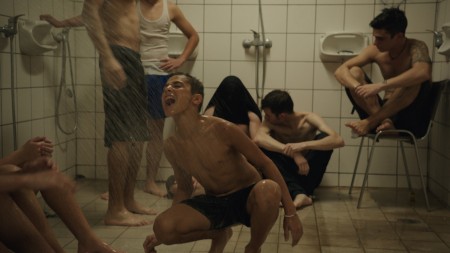
Aimless youth 2.0
This debut feature of young Greek director Sofia Exarchou arrives much anticipated, having gathered a brace of citations and workshop assists in the making stages. So yes, it has promise, ambition and perhaps originality, but the payoff may be still in the future. In it she has chosen to depart from the Greek "Weird Wave" represented by the now much admired Yorgos Lanthimos and Athina Rachel Tsangari toward something less plot driven and more observational. She insists it was highly written and directed, but the energy of the film owes much to its pack of young local unknowns chosen for their ensemble improvisational potential and to its choice of derelict sites of the 2004 Athens summer Olympics for much of the action, set also in summer. If she was writing, how come there's so little happening? She says it could be anywhere, and has global application, but this empty, wasted site that cost so much to build and now is unused is a pointed reference to the current economic and political disaster of her country. No echo of Michael Phelps's six gold medals, no roar of the crowds. Only pale grass, dry cement, idle youths.
To claim this is nowhere special is to forget an action must be particular and local before it can be universal. Stylistically, Park may owe more to Harmony Korine and his collaborator Larry Clark (one of whose most famous and least seen movies is called Ken Park, no connection though) and to Lucredia Martel. All this promises much. In the event, despite many vivid little incidents, the whole is less than the sum of the parts. We come away without much to remember besides some energetic young bodies in fast motion, still water, rust and pale greens, energetic handheld camerawork, some handsome urban landscapes in a desaturated palette.
There's a crowd of similar boys. This could almost be sombody's fifth grade class. Among the older boys one emerges, Dimitris (Dimitris Kitsos), who winds up being in almost every scene. If I got it right the handsome smaller one, Markos (Enuki Gvenatadze) is the manager of the pit bull put out to stud for visitors for cash, but when other boys bet on two dogs and theirs dies, it's Dimitris who rescues the fallen body. He pairs off for a while with a rather severe looking young woman called Anna (Dimitra Vlagopoulou) who was forced to abandon a career as a gymnast due to several severe injuries. So Anna might be haunting the site of what could have been her triumph, had life not gone wrong. Dimitri is fired by his mother's boyfriend, the boss at a rock quarry, so he has nothing to do and wants to escape.
After we've seen the kids running around and making a lot of noise (arm wrestling, fighting; surprisingly, getting the locker room showers to work again and cooling off), Anna and Dimitri haunt a beach where cut rate tourists gather. There are hazing rituals and fights and contests, and there is dancing. Sex seems combative, not very successful. At the end, Dimitri follows Jens, a Scandinavian man (Thomas Bo Larsen of The Celebration and The Hunt) back to his hotel room. This sequence could be seen as troubling or merely indecisive. Nobody seems to know where it's going to go. Love, sex, robbery, assault, a plea for protection all seem possibilities. And that could be good if the incident had been magnified enough to make its uncertainty huge and troubling, but it winds up just seeming one more vague incident. Before that, Dimitri stripped for Jens and his friends, male and female, who threw him cash like a burlesque queen, and his body, we already knew, was nice to look at.
If all this is to imply that kids doing nothing in the summer in a nowhere place is a sign of the decline of western civilization, one must beg to disagree. On the contrary, such circumstances are a universal blank slate upon which anything might be written. Give the kids magazines to sell and a van to ride in and you've got Andrea Arnold's American Honey, a sexy, tumultuous, disturbing movie set in the present. Give us nostalgia and Stephen King and younger boys and you've got Rob Reiner's Stand by Me. Give us Italians in 1953 or 1961 and you might get I Vitelloni or Accatone. Send us to China in 1983 and we get Hou Hsiau-hsien's The Boys from Fengkuei. To a keen observer, there ought not to be so little happening as we see in Park. Sofia Exarchou gets up very close to the action, but it's all sound and fury. This still winds up feeling like the observation of a tourist, a rather mournful one at that.
Christopher Vourlias in Variety and Lee Marshall in Screen Daily reviewed the film when it debuted at Toronto and San Sebastian respectively, Sept. 2016. Cinematography by Monika Lecczewska, editing by Exarchou and Yorgos Mavropsaridis, music by Alexander Voulgaris.
i]Park[/i], 100 mins., launched at Toronto, then San Sebastián, showing at some 18 international festivals including London and Rotterdam, also San Francisco, as part of which it was screened for this review.
SFIFF showtimes: Apr. 14 at 8:30 pm, Roxie Theater; Apr. 19 at 3 pm, Alamo Drafthouse New Mission.
Last edited by Chris Knipp; 04-07-2017 at 07:37 PM.
 Posting Permissions
Posting Permissions
- You may not post new threads
- You may not post replies
- You may not post attachments
- You may not edit your posts
-
Forum Rules





 Reply With Quote
Reply With Quote







Bookmarks